SANTORINI (Day 3)
In the morning, we walked the 588 cobblestone steps all the way down to the dock. The way was filled with donkeys who had little to no interest in getting out of the way.
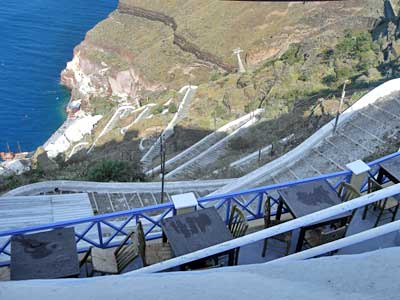
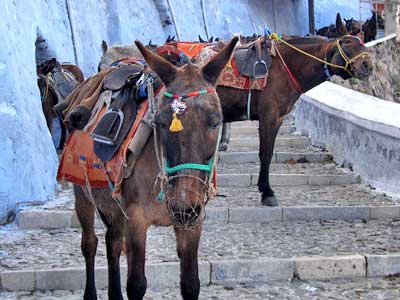
We waited for our boat, the Odysseus, to arrive. It was to carry us to Nea Kameni, one of the small islands located directly in the center of the watery caldera.
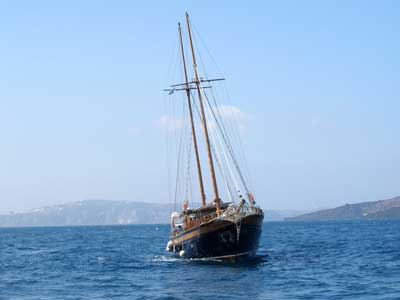
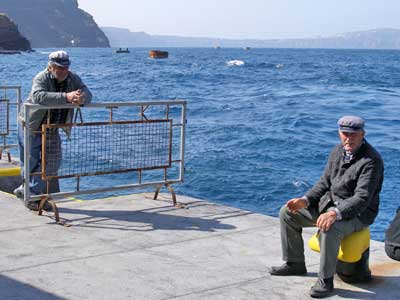
The Odysseus crosses the choppy waters of the caldera. Traditional-looking Greek sailors.
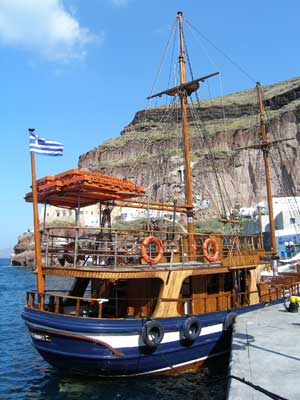
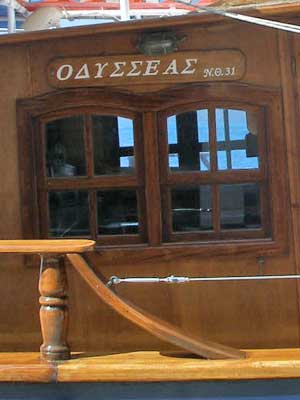
We crossed the turbulent, deep blue water and arrived at the island where we disembarked and were given a bit of time to explore. Nea Kameni (meaning "new burnt island") has about a 1-mile diameter and was formed over the past 2,000 years due to repeated eruptions, the last of which took place in 1950. It was VERY windy as we looped around the path and the smell of sulfur was quite prominent.
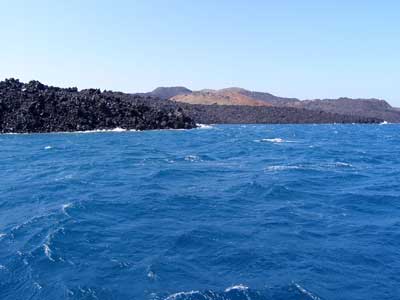
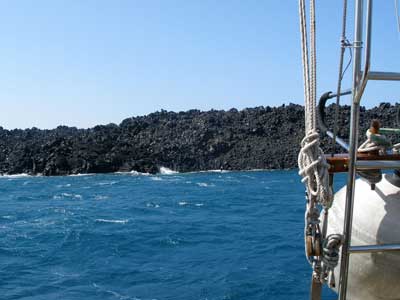
Approaching the island
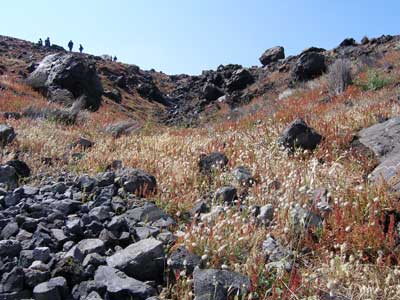
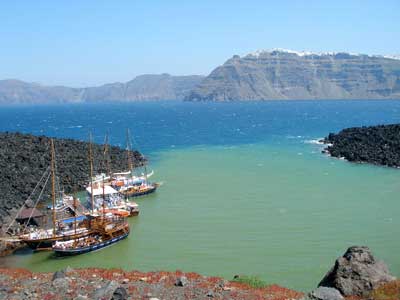
A steep climb to the top of the island... with views of the boats below
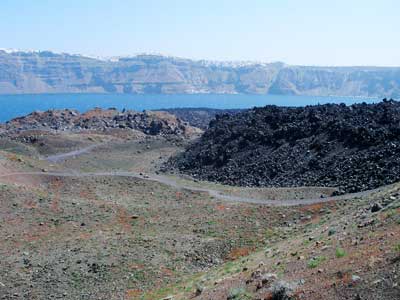

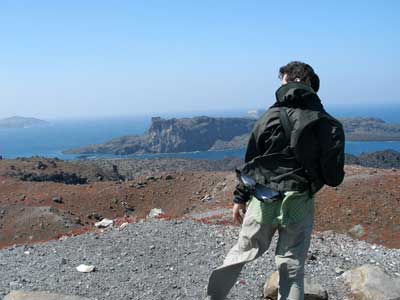
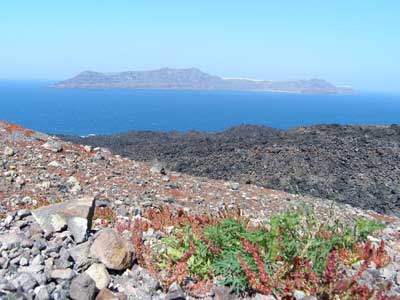
We hopped back on the boat and sailed to the other island, Palea Kameni ("old burnt island"). We pulled into Agios Nikolaos (a small bay with the church and hot iron springs) which was formed by magma from an eruption in 726. Those who were brave could jump from the boat and make the cold swim to the warmer waters of the spring.
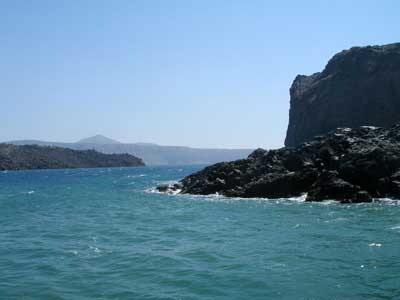

Eventually everyone was back on the boat for the rough ride back, after which we had to hike back UP to the top of the cliff.
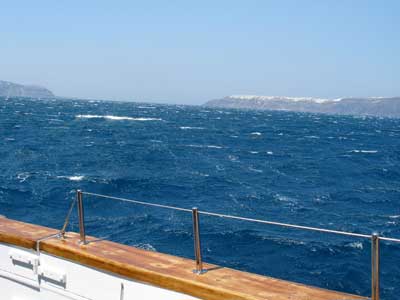

Crossing the caldera... and a view of Fira (including the steep path back to the top)
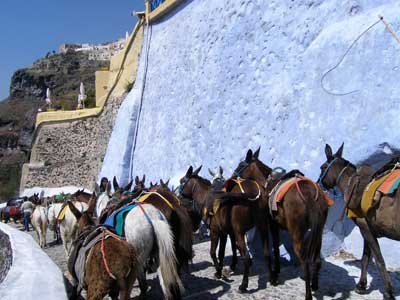
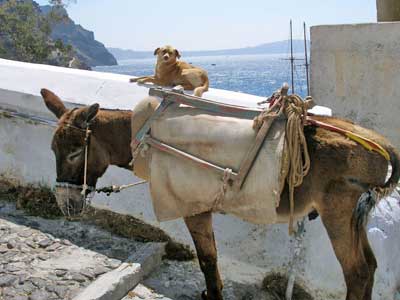
At 4:30 pm, we caught a bus to Oia (pronounce Ee-a) located on the northwestern tip of the island. It served as one of two ancient harbors of the island.
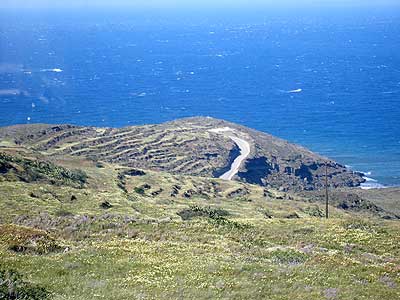
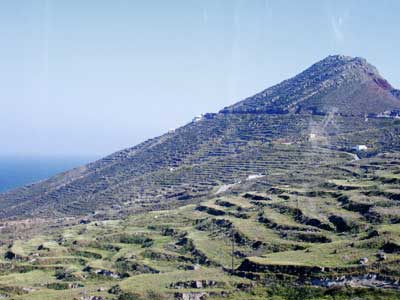
The town was an incredible maze of absolutely beautiful streets. We wandered aimlessly about.
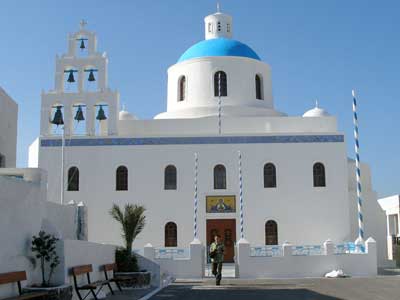
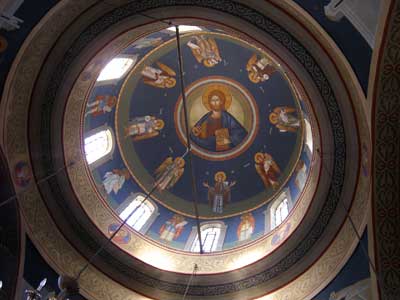
The Church of Panagia Platsani was originally built on the edge of the village inside the castle, but an earthquake destroyed it in 1956. It was rebuilt in the village center on more stable ground.
Back in 1054, Christianity split into two parts: Roman Catholics and Eastern Orthodox Catholics (called Greek Orthodox here). The Western part was based in Rome, spoke Latin, had Western saints and images, and used of unleavened bread in religious ceremonies. The Eastern Part was based in Constantinople (capitol of the Byzantine or Eastern Roman Empire), spoke Aramaic and Greek, and had different religious and cultural customs.
The division started when Pope Leo III crowned Charlemagne as Holy Roman Emperor in 800. This was an insult to the Byzantines, who already had their own emperor. For the next 200 years, relations continued to deteriorate. Then in the 1050's, Michael Cerularius (the patriarch of Constantinople at the time) began disputing with Pope Leo IX over church practices. When he finally refused to acknowledge the supremacy of the Bishop of Rome (aka Leo IX) in 1054, he was promptly excommunicated. The Eastern Church then officially severed all ties with Rome.
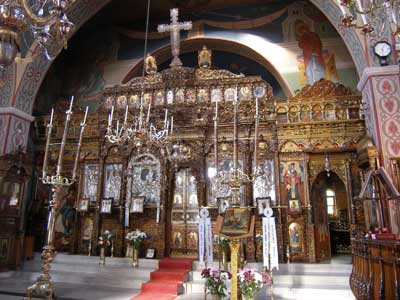
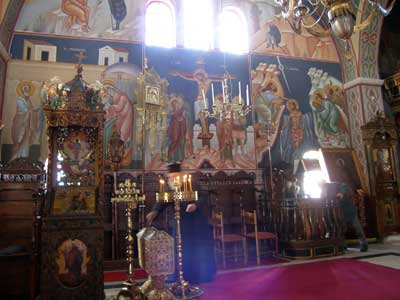
Byzantine art is a combination of classical Roman art and ancient Greek art. Its span is generally considered to run from 330 (when Emperor Constantine adopted Christianity and moved his capital from Rome to Constantinople at the eastern frontier of the Roman Empire) to 1453 (the fall of Constantinople to the Ottoman Turks). Even then, however, Byzantine art and culture continued on in its far-reaching outposts, as well as in the Ottoman and Russian Empires.
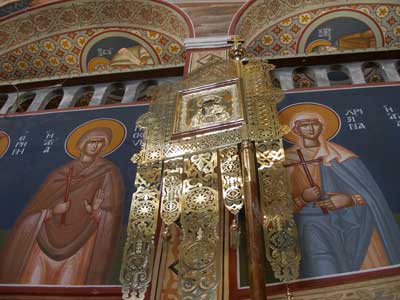
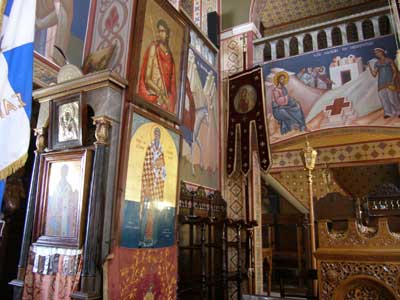
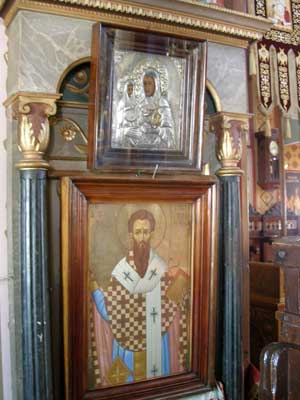

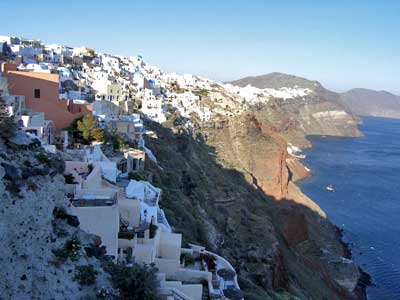

Looking down the length of the island... and down the walkway that once led to the ancient port
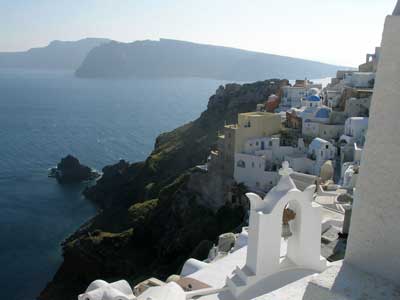

Private towers are often erected to saints to protect those at sea.


Anastasis Church and its pink belltower... a door leading to nowhere
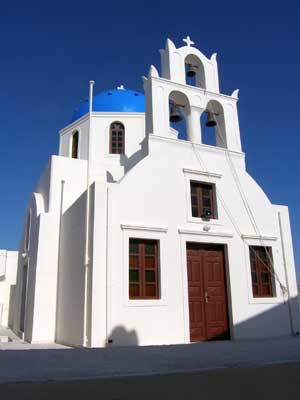

There are over 400 churches located on the island.

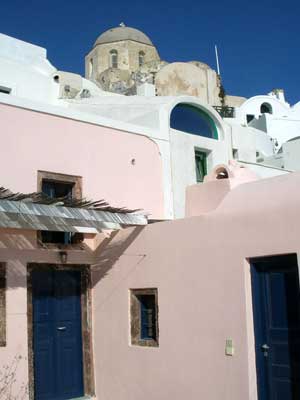
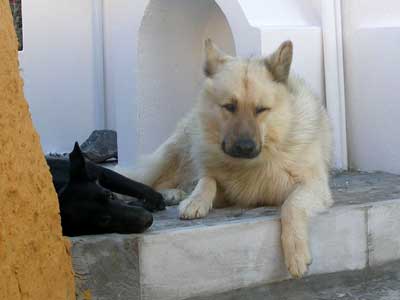

Dogs loitered freely about.
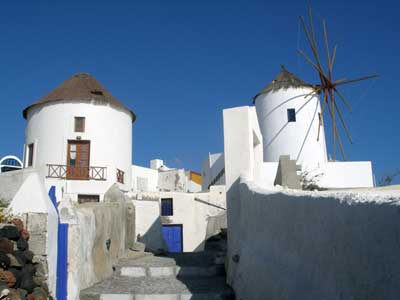
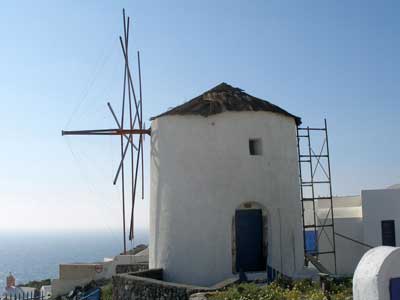
The first windmills were developed in Persia about 500 - 900 AD, probably to pump water. They began to appear in Greece in the 1100's to 1200's. The most common type was these stone cylindrical ones. They were used to grind grains such as wheat and barley into flour.
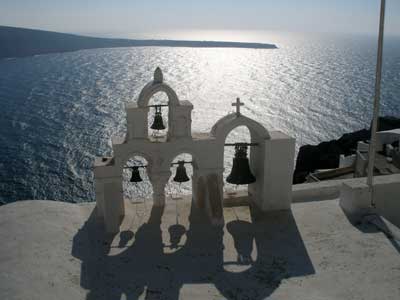
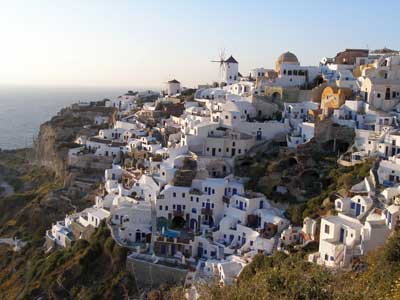
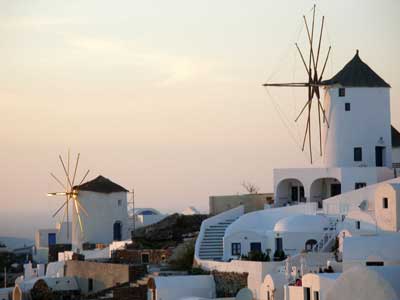
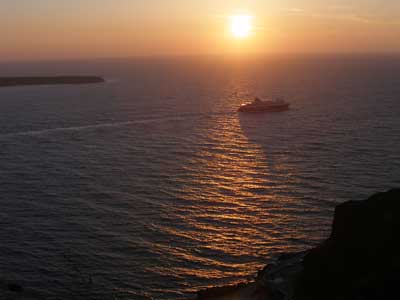
A gorgeous sunset
There was still SO much to see but our daylight was gone, so we hopped on a bus back to our hotel in Fira.
return • continue

